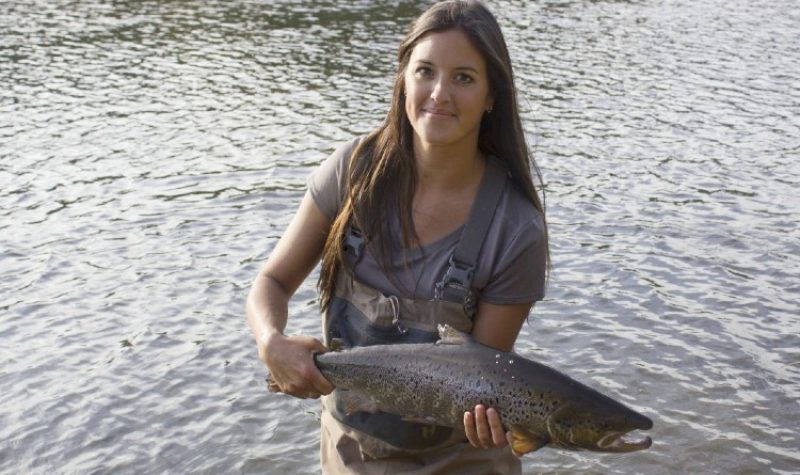The Inner Bay of Fundy wild salmon population, which collapsed in the 1990s, is experiencing an apparent rebound following efforts led by Amlamgog, also called Fort Folly First Nation.
To mark the return of the endangered wild salmon this season, a ceremony is taking place to bless the waters for their safe passage at Alma Beach today, National Indigenous Peoples Day.
Tim Robinson, director of Fort Folly Habitat Recovery, credited the leadership of the small Mi'kmaw community with ensuring the survival of wild salmon in the inner Bay of Fundy.

Tim Robinson. Photo: ffhr.ca
A chart shows changes in observed salmon returns at two major watersheds in Fundy National Park. Handout from Fort Folly Habitat Recovery.
There have also been improvements in the Petitcodiac watershed, according to Fort Folly Habitat Recovery.
In the coming months, the group is anticipating that adult salmon will be returning to those three rivers, with greater volumes in the years to come.
The Fundy Salmon Recovery Model involves collecting Atlantic salmon smolts — young salmon that are ready to migrate to the ocean — and rearing them at the Mactaquac Biodiversity Facility, a Department of Fisheries and Oceans complex near Fredericton.
The mature fish are mated to ensure genetic diversity, and then released into their home rivers, according to the department. DFO conducts a genetic analysis of those fish at the Mactaquac facility, a “live gene bank” that yields about half a million eggs annually for Inner Bay repopulation efforts.

Map from Department of Fisheries and Oceans
Fort Folly Habitat Recovery also worked with the group Petitcodiac Riverkeeper to lobby successfully for the removal of the river causeway in Moncton, which disrupted salmon populations along that river after it was built in the 1960s. In 2021, it was replaced with a bridge spanning the Petitcodiac, a river that's sacred to Fort Folly First Nation.
The habitat recovery project has also resulted in employment for Indigenous youth, who are trained as river technicians.
The group has released more than one million unfed fry – fish at an early developmental phase – into the Petitcodiac Watershed, along with more than 8,000 mature adults, re-establishing the population. Just last week, they “released a total of over 100,000 Inner Bay of Fundy Atlantic salmon fry” into that watershed.
And Robinson says these methods could be reproduced in other rivers, including ones closer to home, like the Tantramar and the Memramcook Rivers.
Efforts by Fort Folly Habitat Recovery have grown over the years to include a long list of partnerships, including Cooke Aquaculture, the fish farming company, which manages the Wild Salmon Marine Conservation Farm at Dark Harbour, Grand Manaan Island.
Workers at that facility, which is billed as the first of its kind in the world, grow juvenile salmon in “conservation sea pens” before mature adults are released to spawn.
The CEO of that company, Glenn Cooke, has hailed the initiative as an “an ideal model for action oriented, science-based conservation efforts.”
But salmon farming companies including Cooke have also faced criticism from conservationists, who say open-net pen aquaculture harms wild Atlantic salmon — due to factors such as sea lice — and should be removed from marine environments.
Robinson acknowledged that open-net pen farming might be contributing to the pressures on salmon populations but stressed the need for collaboration, adding that he doesn’t believe fish farms alone could be driving the losses. He said it was more likely “death by a thousand cuts,” including forestry practices, river barriers, changes to the food web, and shifting temperatures.
Robinson isn’t Indigenous, but he’s been working for Fort Folly First Nation since 1995. The First Nation has been working on the habitat restoration project since the late 90s.
Indigenous and non-Indigenous members of the project are happy with the results, he said. “We're very humbled and very honoured to be part of Fort Folly’s leading role in stewardship and recovery of the iconic inner Bay of Fundy Atlantic salmon.”
Indigenous Elders Betty Ward of Metepenagiag and Joan Milliea of Elsipogtog First Nations will be at Alma Beach at Fundy National Park today for a ceremony and celebration, and the public is invited to attend.
Listen here for an interview with Tim Robinson, director of Fort Folly Habitat Recovery:


